ADVERTISER DISCLOSURE: The Frugal Tourist is part of an affiliate sales network and receives compensation for sending traffic to partner sites, such as MileValue.com and Cardratings. This compensation may impact how and where links appear on this site. This site does not include all financial companies or all available financial offers. Terms apply to American Express benefits and offers. Enrollment may be required for select American Express benefits and offers. Visit americanexpress.com to learn more. All information about the American Express Schwab Platinum has been collected independently by The Frugal Tourist.
EDITORIAL DISCLOSURE: Opinions, reviews, analyses & recommendations are the author’s alone and have not been reviewed, endorsed, or approved by any of these entities.
Recommended Stay: At least five days.
If I could rank Turkey more than five stars, I would. Being the archeological junkie that I am, the entire country is as close to an ancient playground as it gets.
Countless ruins dot the Western region of this spellbinding country, and seeing them all is not only impossible, but it is also not recommended to do on one trip.
Hence, in this blog post, I have combined my top choices for Western Turkey’s best ancient ruins into an exhilarating five-day itinerary that anyone can easily replicate.

Turkey: Archeological Ruins Abound
Regarding archaeological sites, Turkey certainly gives Egypt, Angkor Wat, Ancient Rome, and Ancient Greece a run for their money.
I’ve read somewhere that Turkey possesses more Greek and Roman ruins than Italy and Greece combined, and I honestly believe that assertion.
I visited 10 extraordinary archaeological ruins while backpacking around Western Turkey, primarily through public buses.

Connect The Sites Via Public Transport
The public bus network is extensive and incredibly comfortable, and the locals are hospitable.
During my journeys across Turkey, I only took one plane ride, which was a short flight between Istanbul and Izmir.
Frequent buses and trains also connect these two major cities, so you are welcome to skip this flight.
Being short on time and finding an affordable flight on a budget airline were the deciding factors in my decision to fly.
Since I could not find a map that outlined public transport routes, I utilized Google Maps to attempt to illustrate roughly the trajectory I took while circumnavigating this jewel of a country.
You can download this map for FREE by clicking the share button.
Recommended 5-Day Itinerary
| Itinerary | Ancient Ruins | |
|---|---|---|
| 1 | Izmir airport to Bergama via bus Sleep in Bergama (1 night) | Pergamon and Asclepion |
| 2 | Bergama to Izmir bus station then take the bus to Selcuk Sleep in Selcuk (2 nights) | Ephesus, Temple of Artemis, and St. John’s Basilica |
| 3 | Selcuk | Priene, Miletus, and Didyma (private tour) |
| 4 | Selcuk to Pamukkale via bus Sleep in Pamukkale (2 nights) | Hierapolis |
| 5 | Pamukkale | Afrodisias (private tour) |
The 10 Best Ancient Ruins To Visit In Western Turkey
Day 1: Pergamon And Asclepion
★★★★
I took an early morning flight to Izmir from Istanbul. Then, at the Izmir airport, I boarded a bus to transfer to the central bus station, where I rode another bus to Bergama for the ancient sites of Pergamon and Asclepion.
Izmir is the gateway to a multitude of astonishing ancient ruins. As a major transport hub, it is strategically situated halfway between Bergama and Selcuk (for Ephesus), making it the perfect spot to start our tour.
Pergamon
Bergama was my first destination outside of Istanbul. Mesmerized by the outstanding Pergamon Museum in Berlin, I was determined to track down where that museum’s artifacts originated.
Pergamon is tactically positioned on a towering hill overlooking the new city of Bergama. It is designated as a UNESCO World Heritage Site.
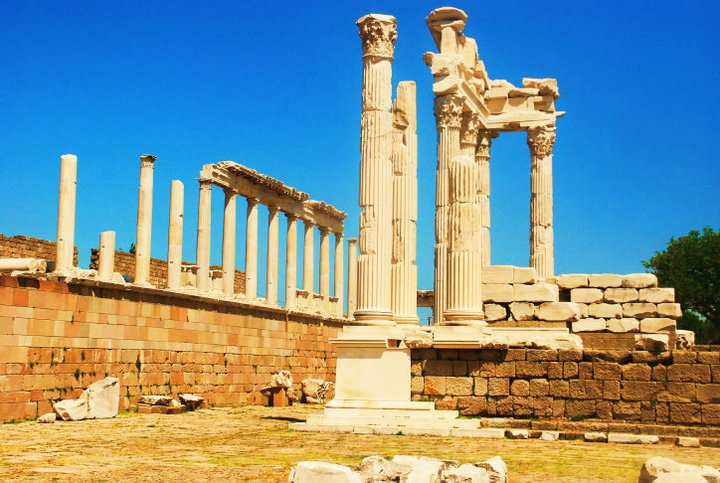
Most of Pergamon’s relics were “stolen” by German excavators, but the remaining columns remain evocative and atmospheric, making the site worthwhile.
The cable car was under construction when I visited, so I hired a cab to take me around the town’s ruins. I also saw people hiking to the site.
During the Hellenistic period (around the 3rd century BC), Pergamon became the capital of the Attalid dynasty and was considered the principal center for learning in ancient times.
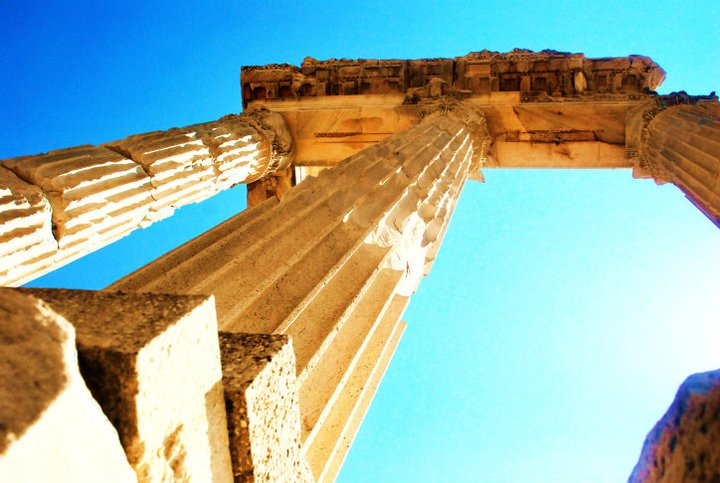
When the power transferred from the Greeks to the Romans, Pergamon became the capital of the Roman Empire province of Asia before Ephesus.
Pergamon’s main highlight is the Acropolis (an ancient Greek fortified city).
Emperor Hadrian transformed the Acropolis into a bustling metropolis, crowned with a steep 10,000–seater theater constructed on the hillside, an aqueduct, a gigantic library, and a breathtaking altar.
Most of these are impressively well-preserved in the eponymous museum in Berlin.
Most importantly, Pergamon was also the location of Ancient Rome’s most famous healing center, the Asclepion, my next stop.
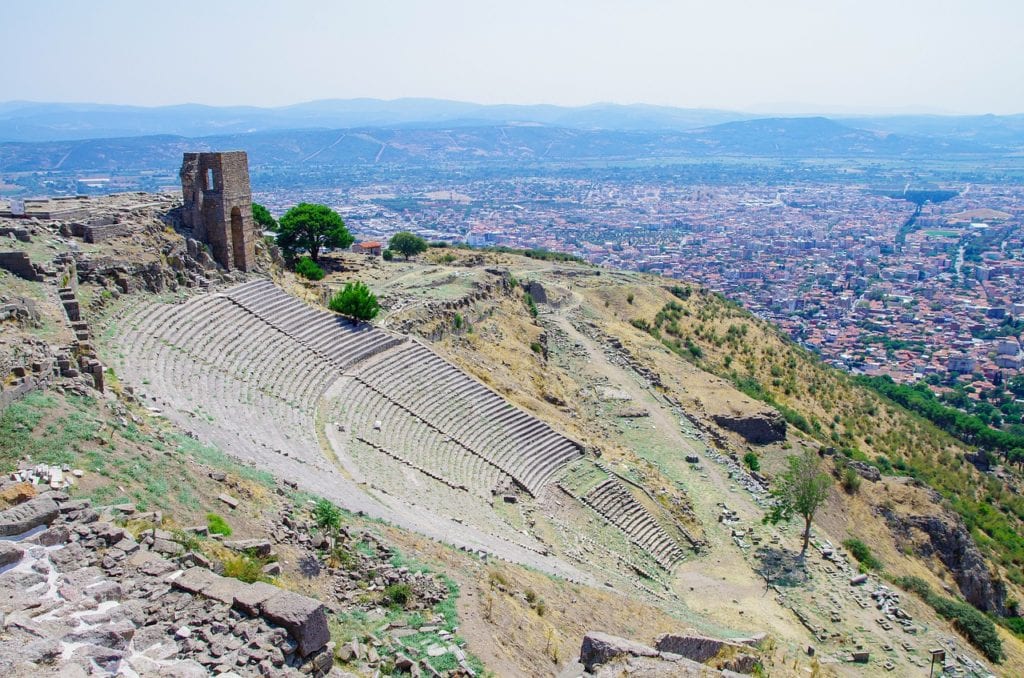
Asclepion
Asclepion was the principal medical complex during the Roman era and was the first psychiatric hospital in the world.
Strategically located below the Acropolis, this ancient center offered an array of treatments, including massages, sacred water, mud baths, psychotherapy, and herbs. Physicians of Pergamon’s gladiators were also stationed here.
Named after Asklepios, the god of healing, this treatment center has several existing structures that have survived the test of time, including a well-preserved theater and a fountain that spills healing water.
You are probably curious about the theater — it was the source of entertainment for patients who needed to complete lengthy medical procedures.
During my visit, drinking the sacred water flowing from an unappetizing plastic pipe was still deemed safe, although I would not recommend it to those with weak digestive systems.
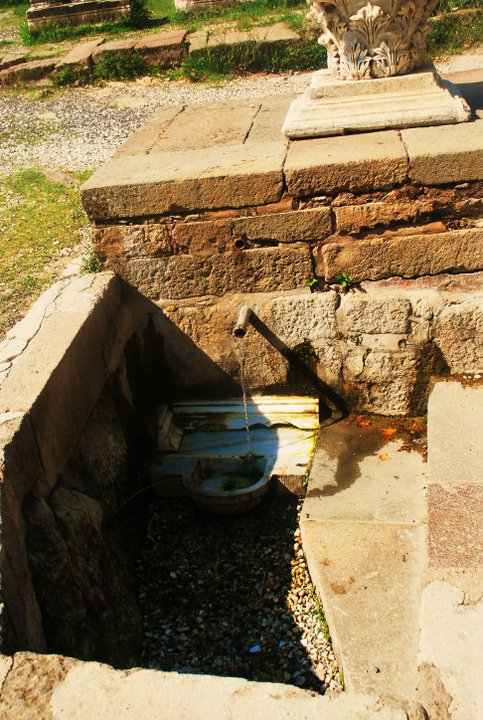
Hundreds of sick people still visit the site today, hoping to utilize an ancient healing method as an alternative intervention to cure a wide range of ailments.
Pergamon and Asclepion can be comfortably explored in half a day. Afterward, I walked around Bergama to check out some lesser-known sites, such as the Red Basilica.
I also experienced genuine Turkish hospitality firsthand around town. Well-meaning locals kept on inviting me to have tea or engage in small talk.
Everybody was so friendly! (Some authentically, some with ulterior motives– to sell carpets). I also had some of the best Turkish delights here in Bergama. Yum!
If you want to read more about Pergamon, here’s an in-depth article about its Greek origins.
Here’s a video of what Pergamon looked like at its peak.
How to get to Bergama:
From Izmir airport, take a bus to Izmir’s central bus station (otogar). From there, you can take a bus to Bergama.
Buses that go to Cannakale also stop at Bergama. From the Bergama bus station, you can take a cab or a bus (dolmus) to the town center.
If you are coming from Istanbul, some buses go straight to the Bergama Otogar.
Transportation options change dramatically year after year, so it is best to research for the best option before your trip.
Going Around Bergama:
A cable car jets tourists from Bergama to the top of the Pergamon ancient site.

Day 2: Ephesus, Artemis, and Basilica of St. John
★★★★★
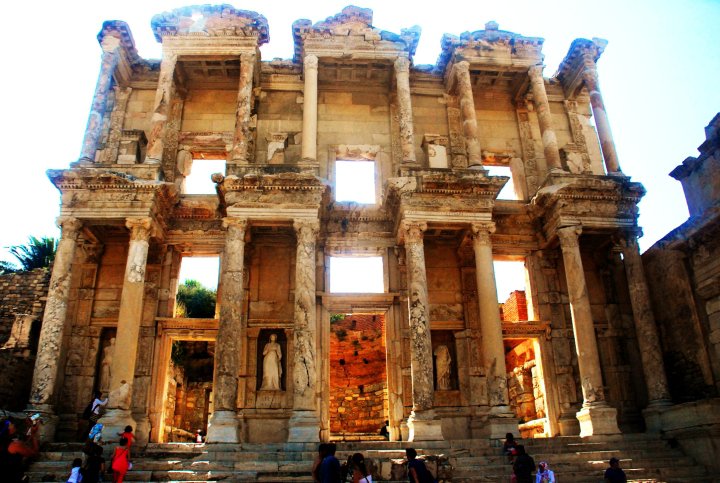
It was a 3-hour bus ride from Bergama via Izmir to Selcuk, the gateway for Ephesus, the Temple of Artemis, and the Basilica of St. John.
Tours to three relatively diminutive but equally marvelous ruins – Priene, Miletus, and Didyma – can also be booked in town.
Upon arrival in Selcuk, I made a beeline for Ephesus’s remarkably outstanding, well-preserved ruins.
On your way to Ephesus, look for the last surviving column of the Temple of Artemis, one of the Seven Wonders of the Ancient World.
Temple of Artemis
Previously the record-holder for being the largest temple in the world and one of the original Seven Wonders of the Ancient World, the Temple of Artemis is barely a shadow of its former glorious self.
Lamentably, only one pillar remains as the sole survivor of this once enormous temple of worship.
Use your imagination to visualize the other 126 massive columns to understand how gigantic this structure was before it descended to decay.
The top of the remaining pillar provides a secure habitat for storks. Zoom in to see the storks’ nest on top!

Ephesus
Ephesus is considered to be the best-preserved classical city in the Eastern Mediterranean. It is worth half a day on a whirlwind visit.
Built around the 10th century BC, this ancient Greek city peaked when the Romans took control around 129 BC and made Ephesus its capital.
It was also popular among Christian pilgrims, as the Apostle Paul supposedly lived here. St. John was buried nearby, and Mary’s house is situated on the outskirts of town. It is possible to connect all of these pilgrimage sites in a day.
When exploring Ephesus, hiring a guide or renting out an audioguide is recommended to help you bring this enormous ancient city to life.
There is an overwhelming amount of extraordinary archaeological jewels everywhere you turn.
Try to visit early in the morning or late in the afternoon, as the mid-day heat can be oppressive. Bring bottled water.
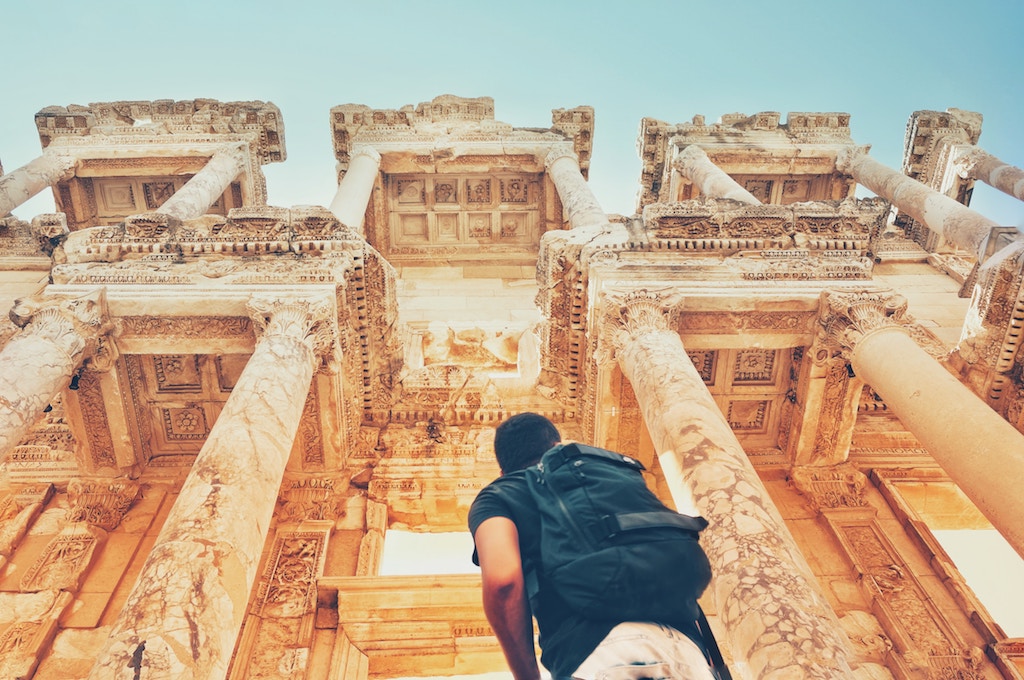
There are two entrances – the upper gate and the lower gate.
A recommended route is to start from the higher entrance and gently descend towards the bottom exit while exploring the marvelous ruins.
As mentioned, there are so many highlights, but the Library of Celsus takes the top spot and deserves to be the ubiquitous poster child of souvenir magnets and postcards.
The breathtaking facade faces east to ensure bookworms a steady flow of sunlight during the day. It allegedly housed over 12,000 scrolls.
Take your time investigating the extraordinarily well-preserved exterior and consider how fortunate you are to stand before one of the most enthralling ancient structures left intact in the world.
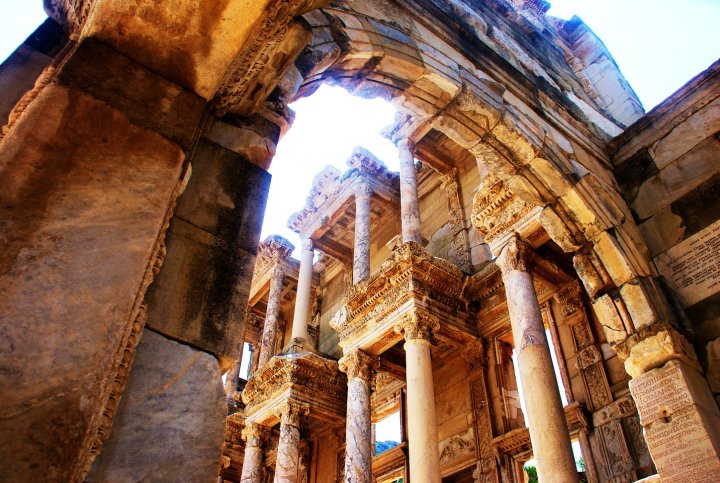
Another magnificent Ephesus highlight is the enormous 25,000-seater theater that hosted plays and gladiator fights.
It holds the title of the largest theater in the ancient world. Interestingly, the first remnants of gladiator relics were only excavated in this area as recently as May 2007.
Even though they require an additional fee, the exceptionally well-preserved frescoes of the Terrace Houses are a sight to behold and a must-see while in Ephesus.
Six aqueducts, numerous baths, and gorgeous houses and temples were also erected in this mesmerizing city, and their remains continue to captivate the thousands of tourists who visit this site.
Feel free to download this Ephesus map below from Alpaca Travel. It is a great supplement to the audioguide.
Ephesus Top 10 Must-See Checklist:
- Library of Celsus
- Hadrian’s Temple
- The Church of Mary
- The Marble Road
- The Theater
- Curetes Street
- The Terrace Houses (additional fee)
- Nymphaeum of Trajan
- The Odeon Theater
- Mazaeus-Mithridates Gate
If you are interested to check out how Ephesus looked like at its peak, check out the video below:
Basilica of St. John
After Ephesus, I still had enough time to browse through the excellent collection at the Ephesus Museum and then hike up to St. John’s Basilica, where St. John’s tomb was purportedly interred.
Constructed by Roman Emperor Justinian I in the 6th century, this massive basilica used to occupy one of Selcuk’s hills. It commemorates the spot where St. John the Baptist was believed to have been buried.
A grand 6-domed church stood in these ruins before an earthquake toppled it all over. Today, tourists can still peruse some of the surviving columns and remnants of frescoes that used to envelop this massive church.
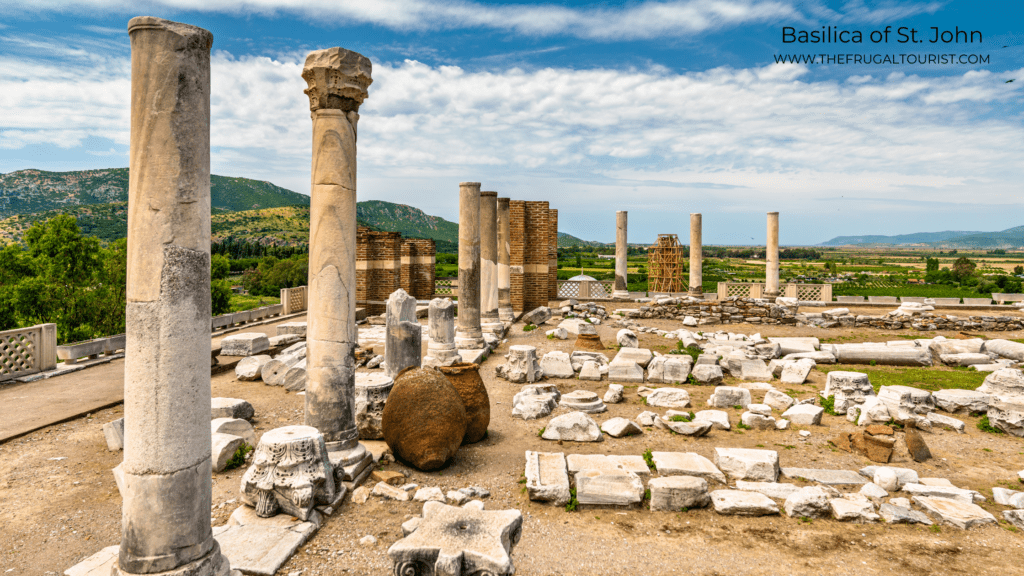
Legend has it that St. John traveled from Jerusalem to the city of Ephesus, where he remained until his death at the age of 100. This site was allegedly where he wrote his gospel and the Revelation.
Located near the center of town and just about 2 miles from Ephesus, this is a must-visit stop if you want to immerse yourself in archaeology without the crowds.
Visiting late in the day, I found myself the only tourist exploring the aisles of this gargantuan complex.
St. Mary’s House (House of the Virgin Mary) is also nearby, so if you have extra time, the place is worth a visit. During my trip, it was not accessible via public transport. Take a cab or join a private tour.
Dinner followed at a restaurant located next to the ancient Byzantine aqueduct where gigantic storks appear to have formed their nests.
After dinner, I looked for a travel agency that could take me to the archaeological ruins of Priene, Didyma, and Miletus the next day.
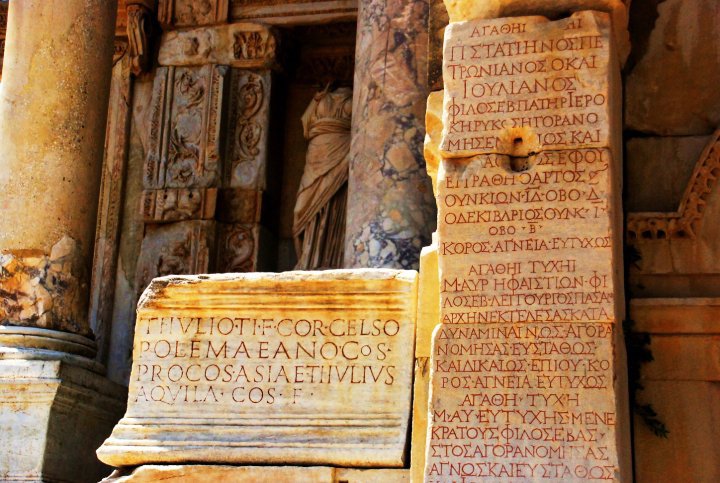
How to get to Selcuk (Gateway to Ephesus, Priene, Miletus, and Didyma):
From Bergama, take a bus to Izmir’s central bus station (otogar). From there, you can take a bus to Selcuk. It takes about 1-2 hours.
It is also possible to take a direct bus from Istanbul (~11 hours).
Trains also run between Istanbul / Izmir to Selcuk.
Transportation options change dramatically year after year so it is best to research for the best option before your trip.
Going Around Selcuk:
You can take a dolmus (bus) or walk from Selcuk to Ephesus. You would need to sign up for a private tour to visit Priene, Didyma, and Miletus.
Day 3: Priene, Didyma, and Miletus
★★★★
Priene
Priene is the Ancient Greek City of Iona. The ruins were believed to be from 350 BC.
The site includes remnants of the Temple of Athena, funded by Alexander the Great.
Originally located by a river, its residents moved the entire town to higher ground where its remains are currently located.
Recent excavations revealed that Priene contains one of the most stunning examples of Greek town planning.
In addition to the Temple of Athena, it also has an agora (market), a theater, a stadium, and a gymnasium.

Didyma
Like Priene, Didyma was an important sacred site in the ancient Greek world.
It boasts an oracle second only in importance to the one located in Delphi. It also has impressive standing columns from the Temple of Apollo.

It provided a better opportunity to experience the grandeur and scale of a relatively intact Greek ruin than the Temple of Artemis in Selcuk.
Exploring the spectacular ruins in Didyma was one of my most indelible experiences in Turkey, and a visit here is highly recommended.
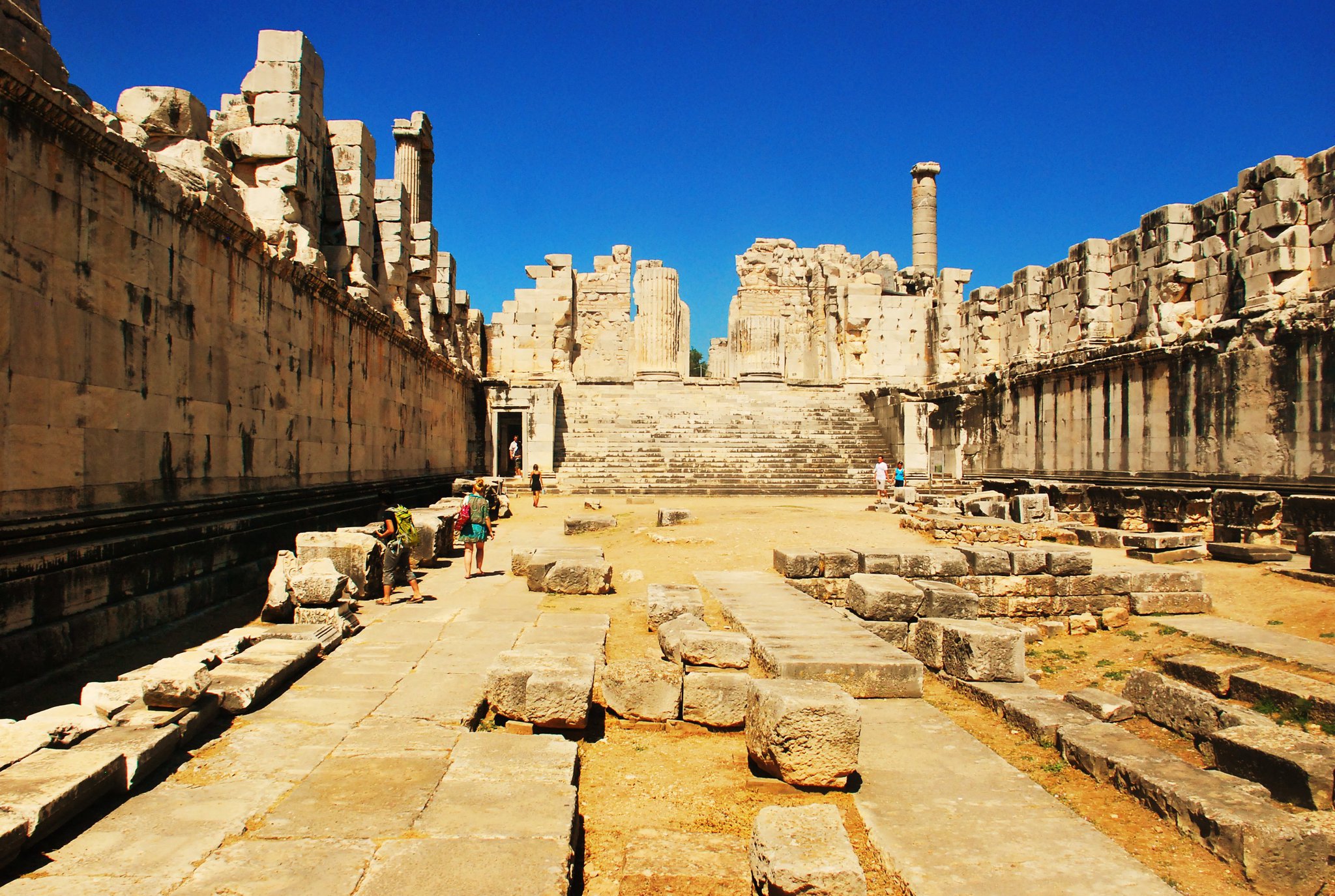
Miletus
Miletus, a vital Greek port city, possesses outstanding ruins of an arresting Greek theater. Before it was conquered by the Persians, it was considered to be one of the most prosperous Greek cities of that period.
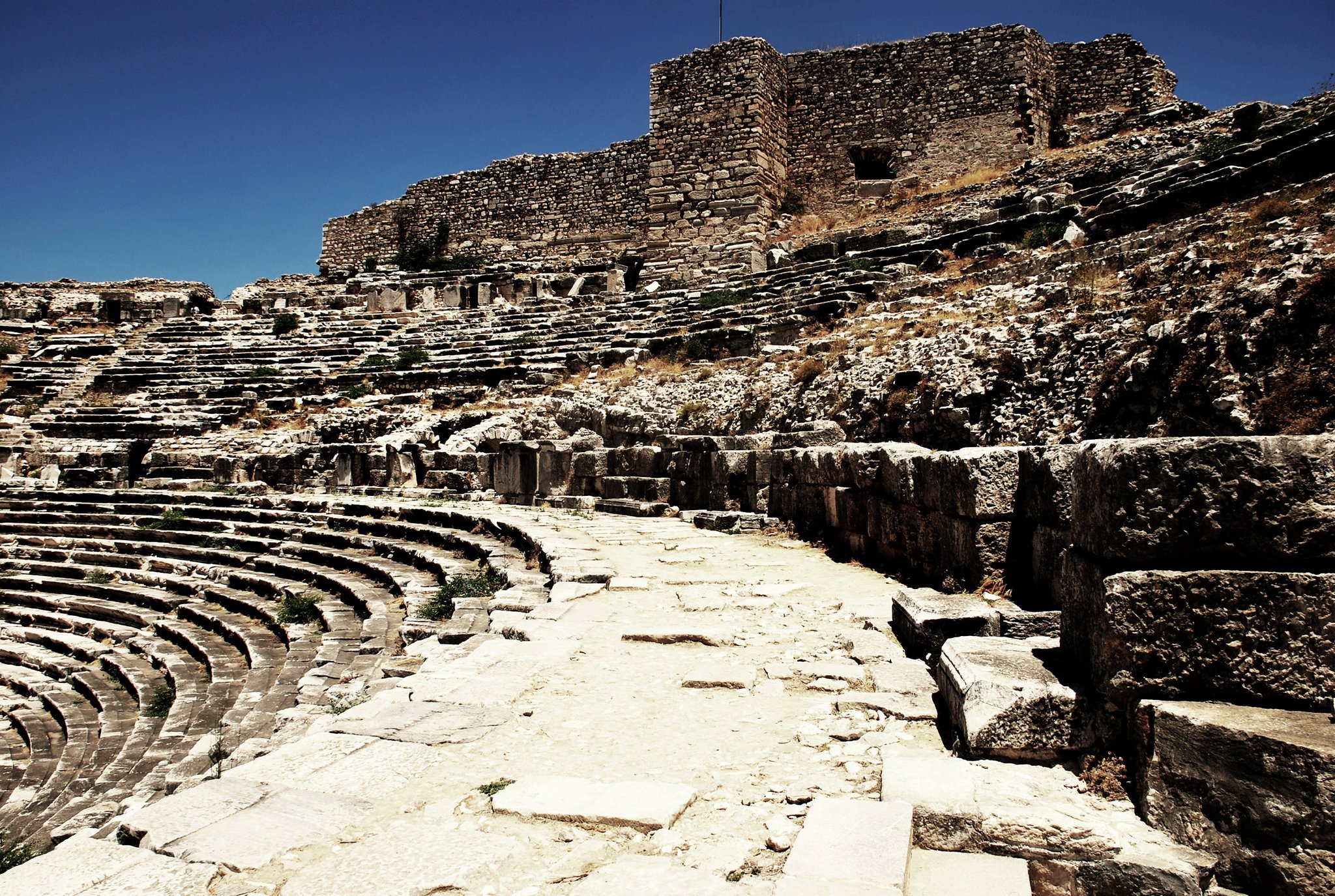
After the trip, I swiftly went back to the Selcuk otogar to take a dolmus (bus) to go to Pamucak, which is a beach town located 10 minutes away from Selcuk. I just had to dip my feet and experience the Aegean Sea.

Day 4: Pamukkale and Hierapolis
★★★★★
The most famous site in Pamukkale is the travertines, created by frozen calcium from water heated by volcanic lava. It is popularly called the “Cotton Castle”.
These travertines, formed by limestone deposited by hot springs, continue to be one of Turkey’s strongest tourist magnets.
These pools were also considered to be spas back in the day and were well regarded as having healing powers.
During my summer visit, the small town was inundated by vacationers swimming in the inviting travertine pools.
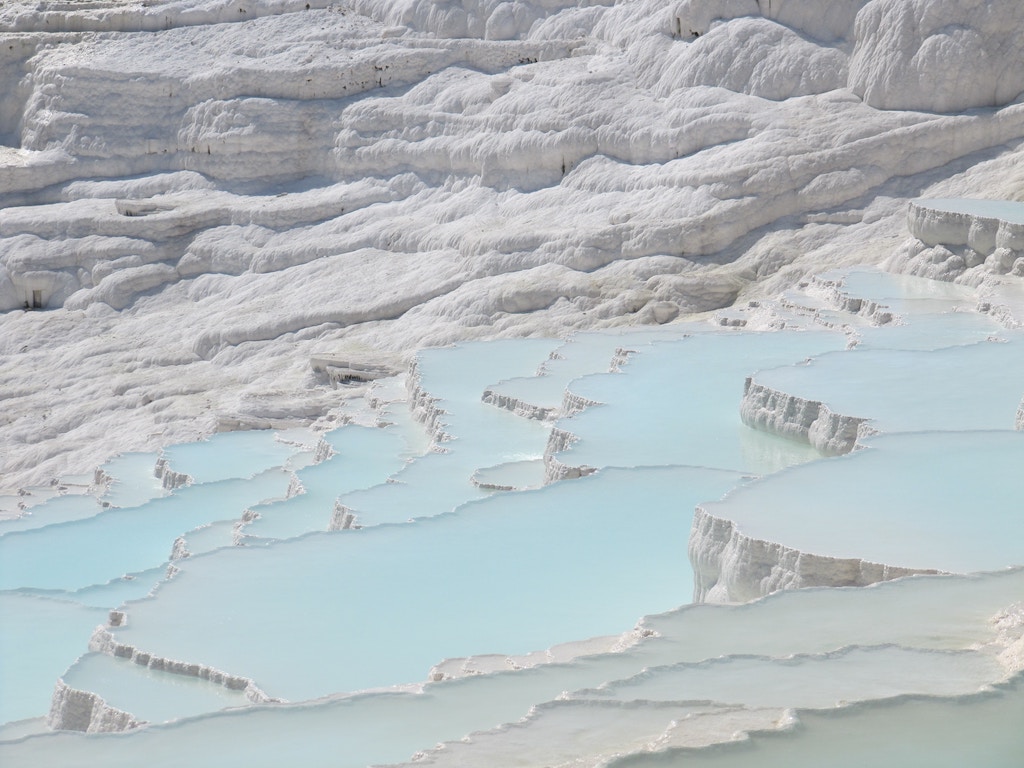
It is best to stay in town overnight so you can be among the first to enjoy these stunning terraced pools before the deluge of day-trippers arrives.
Do not forget to wear your swimwear if you wish to soak into these thermal cascading formations.
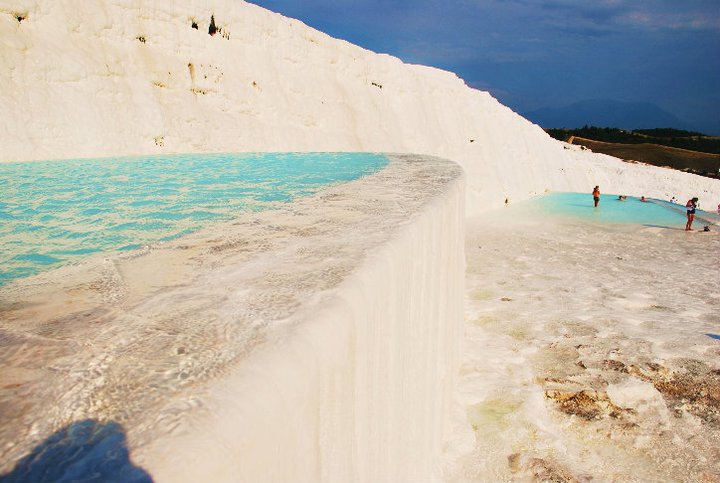
At the time of this writing, shoes are not permitted as they seem to stain and erode these natural wonders. Carry a day pack so you can pack your footwear, as you will need to put them on again when you reach the top.
Nevertheless, little did I know that the travertines were not the only jewels in this neck of the woods. A little farther afield is the vast archaeological ruins of the ancient Roman spa town of Hierapolis, our ninth ancient site in this tour.
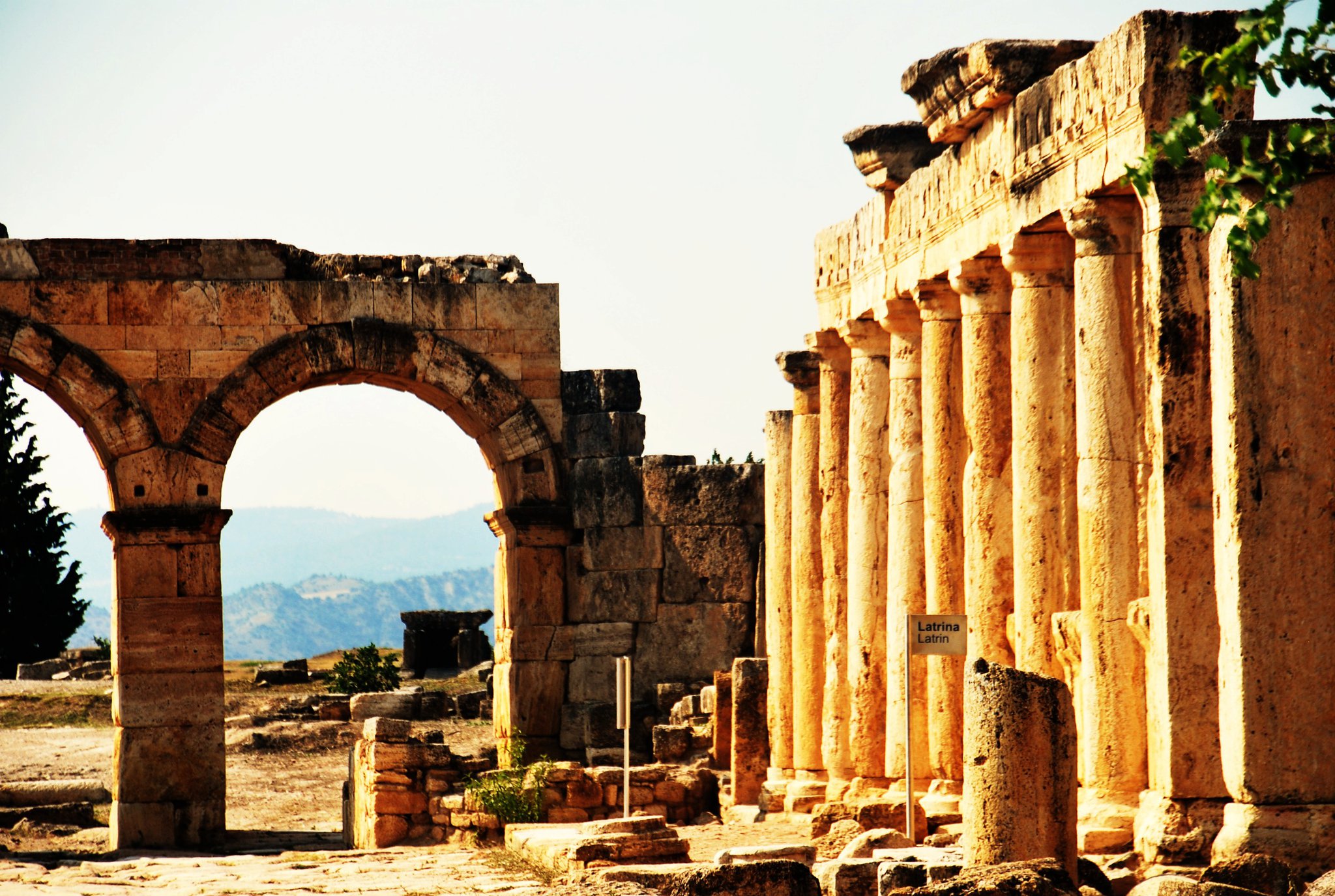
Hierapolis
This Greco-Roman town was constructed in the 2nd century as a sanctuary for those seeking relaxation and medical attention during ancient times.
Hierapolis is a top-notch archaeological site with an impressive Roman theater and other well-preserved structures. A definite must-see.
This is a sprawling site, so make sure you pace yourself so you can see all the major highlights. Don’t miss the Antique Pool (pictured below), where you can swim above submerged marble columns from antiquity.

Other noteworthy sites in this UNESCO World Heritage landmark include the octagonal-shaped Martyrium of St. Philip the Apostle, the Roman baths, and the necropolis.

How to get to Pamukkale (Gateway to the travertines, Hierapolis, and Afrodisias):
From Selcuk, take a bus to Denizli Central Bus Station (otogar). From there, take a short bus to Pamukkale. It takes about three hours to complete the trip.
It is also possible to take a direct bus from Istanbul or Izmir.
For rail fans, trains from Istanbul and Izmir also go to Denizli via Selcuk.
Transportation options change dramatically year after year, so it is best to research the best option before your trip.
Going Around Pamukkale:
You can walk to the travertines and Hierapolis from the center of town.
I used a private tour to Afrodisias, but it is also possible to use public transport to visit the ruins.
Day 5: Aphrodisias
★★★★★
When I visited, I decided to join a tour to learn more about the site’s history. I took a chance to go on an Aphrodisias tour the night before at my hotel.
The tour required a minimum of four people before it could proceed. Luckily, there were three other interested tourists, so off we went the following day. It is also possible to visit this site via public transport.

Aphrodisias was the 8th and last ancient ruin I visited in Western Turkey and only next to Ephesus in splendor.
Touring Aphrodisias was a fantastic way to end my archaeological expedition in this breathtaking region.
It boasts a well-preserved Roman stadium, with an estimated capacity of 30,000 spectators, that I have not seen in the other ruins I’ve visited.
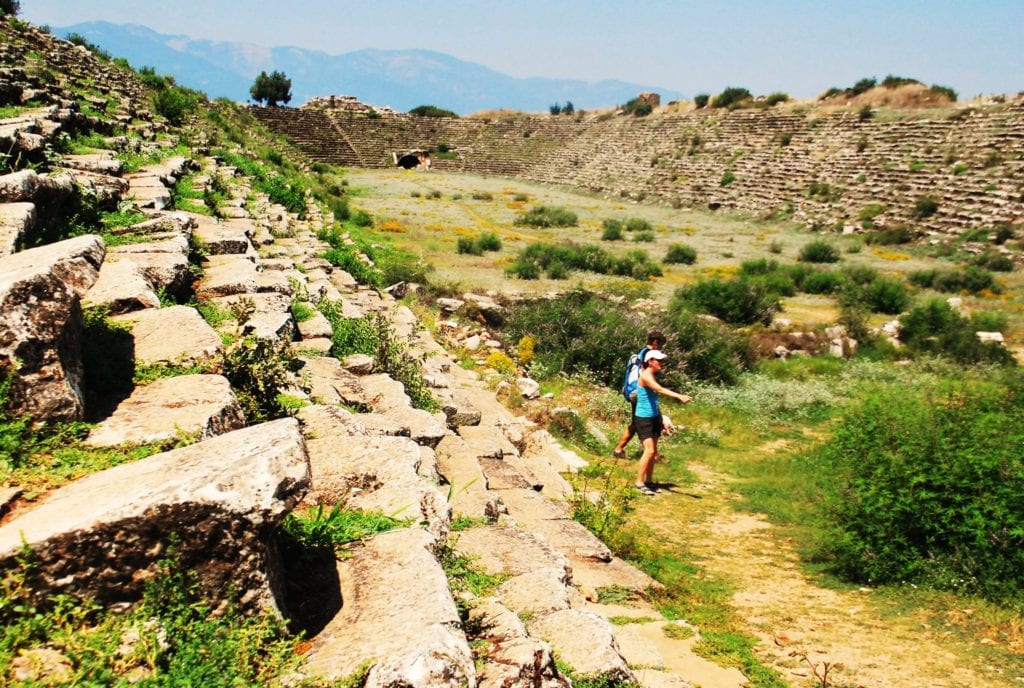
This UNESCO World Heritage site is vast and far less visited by tourists, so there are plenty of opportunities to experience the place without distractions.
TOP 5 MUST-SEE IN AFRODISIAS
- The Roman Stadium
- The Monumental Gateway or Tetrapylon
- Temple of Aphrodite
- The Bouleuterion (Council House)
- The Sebasteon

The tour lasted a few hours, including about 30 minutes at the excellent complex museum, which houses some astonishing reliefs excavated from this monumental ancient ruin.
After this fantastic archaeological voyage, I pushed eastward towards Cappadocia from Pamukkale.
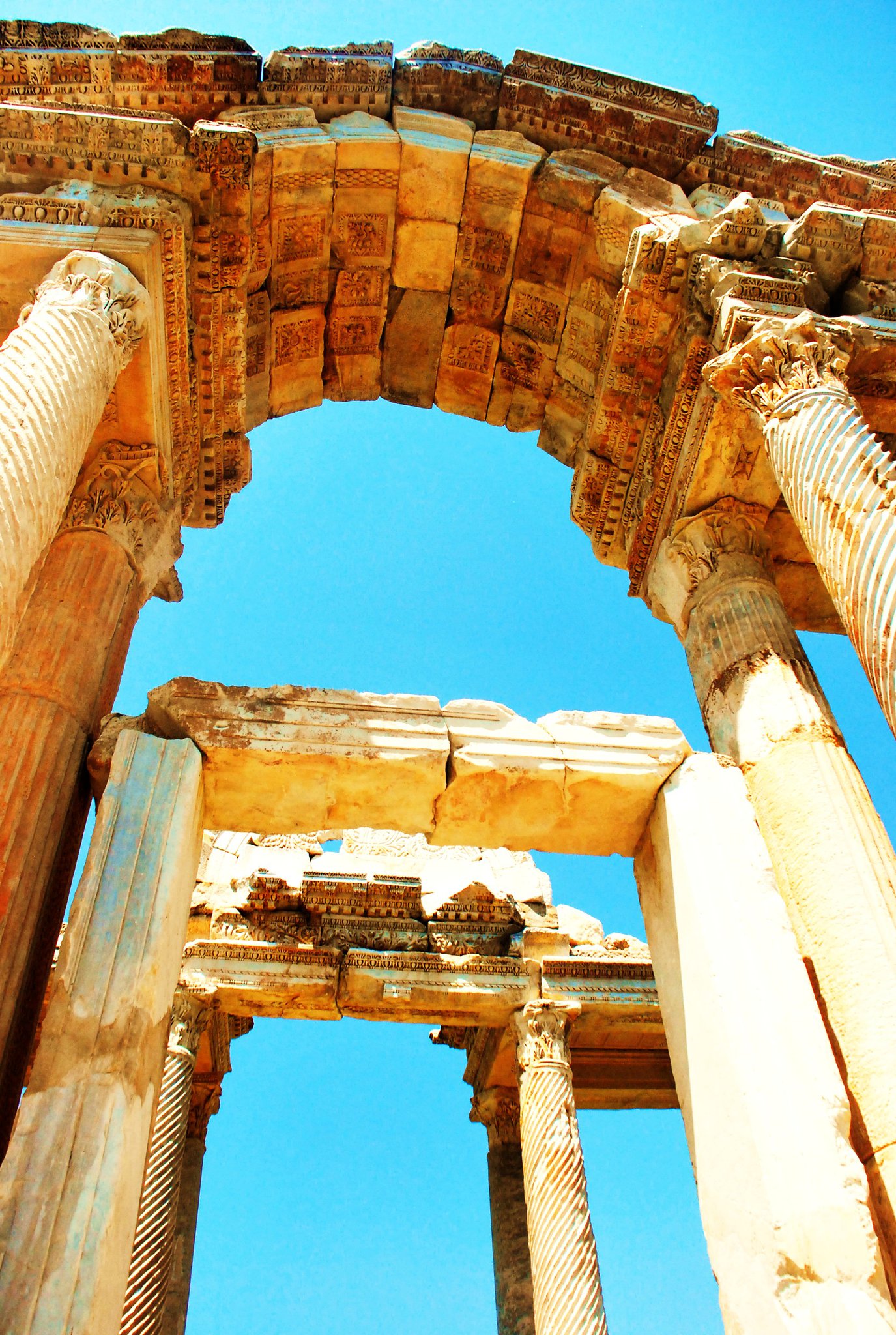
Final Thoughts
Indeed, Turkey is one of the most breathtaking countries in the world, and I enjoyed visiting it.
Whether you prefer the ocean or the outdoors, Turkey always has something to gratify anyone’s cravings.
But, if you are into archaeology and exploring ancient sites, prepare to be swept off your feet. The mesmerizing array of Roman and Greek ruins will certainly leave you speechless.
Although Turkey has many more phenomenal sites, I guarantee that the ruins I have included in this itinerary will all leave a permanent mark in your memory.
After reading many guidebooks, gathering tips from other travelers, and gleaning reviews from travel websites, I am confident that this 5-day itinerary will blow you away.
Above all, I hope this blog post has given you a rough guide on navigating this region independently.
ADVERTISER DISCLOSURE: The Frugal Tourist is part of an affiliate sales network and receives compensation for sending traffic to partner sites, such as MileValue.com and Cardratings. This compensation may impact how and where links appear on this site. This site does not include all financial companies or all available financial offers. Terms apply to American Express benefits and offers. Enrollment may be required for select American Express benefits and offers. Visit americanexpress.com to learn more. All information about the American Express Schwab Platinum has been collected independently by The Frugal Tourist.
EDITORIAL DISCLOSURE: Opinions, reviews, analyses & recommendations are the author’s alone and have not been reviewed, endorsed, or approved by any of these entities.
USER-GENERATED CONTENT DISCLOSURE: The comments section below is not provided or commissioned by the bank advertiser. Responses have not been reviewed, approved, or otherwise endorsed by the bank advertiser. It is not the bank advertiser’s responsibility to ensure all questions are answered.

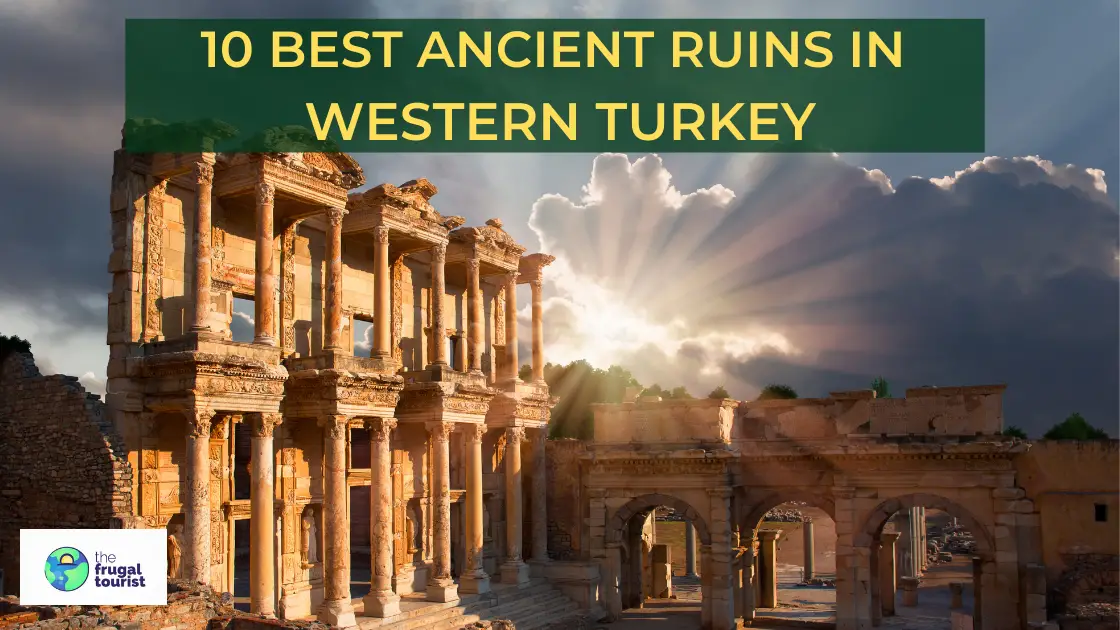


Thank you for all the useful info!
Thank you so much, Bea!
Hi Frugal Tourist 🙂
I am enjoying reading your post.
I am wondering if I do Izmir etc (i.e. following this post of you), before going to Istanbul, do you think it would make a difference? I am thinking of doing Izmir-Pergamon-Ephesus-Pamukkale-Cappadocia-Istanbul, rather than a ‘conservative way’ of Istanbul-Izmir-Pergamon-Ephesus-Pamukkale.
Many thanks!
Hi Grace, thank you so much for reading the post. I hope you found it useful. Your suggested plan is equally amazing. You can definitely fly directly to Izmir. From there, you can take the bus to Bergama (for Pergamon), then to Selcuk (for Ephesus), then to Pamukkale (for Hierapolis and the Travertines!). From Pamukkale, you have so many options on what to do next. I would highly recommend Cappadocia! You would need at least 3 days there though. If pressed for time, you can visit again! Turkey is a destination worthy of repeat visits. And for the grand finale – Istanbul! One of my favorite cities in the world! Hope this helps, feel free to ask any more questions.
Many thanks! We will do that then, following your steps 🙂 Very useful post, indeed!
You’re very much welcome. Feel free to ask questions anytime. Enjoy planning and the ruins!
Turkey is a fabulous destination. Another wonderful place is Syria. I travelled there before the wars started and there were incredible and well preserved ruins. Hopefully, these sites will be open again one day soon.
You are so fortunate, Britt! I was almost at the border with Syria back in 2010 and I should have just gone ahead and hopped over. Now, that is one of my travel regrets. Oh well, hopefully, the war stops soon so it could open again to tourism. Thank you for stopping by!
I’m a history/archeology fiend as well. Thanks so much for these detailed and super helpful hints. I have always wanted to travel to Turkey and am planning on making a trip in the next couple of years. I’ve bookmarked this article for just such an occasion. The waters at Hierapolis look so serene and magical.
HI Rebecca, thank you for swinging by. I absolutely love archaeology and I can’t recommend Turkey enough. You will have so much fun there I’m sure!
We spent a day in Kusadasi a couple of years ago. We toured Ephesus with a group. It was pretty cool. I wouldn’t mind going back to Turkey for a little longer of a stay (it was part of a Greek cruise we were on).
Hi Marianne! Wasn’t the Aegean stunning? Great to hear that you had a wonderful time in Turkey then. I’m sure you’ll be back soon! By the way, I did not get your blog…for some reason, it is not showing up here….
I’ve never been to Turkey. Thank you for giving us such a detailed info. These places look awesome. Definitely I will follow your plan when visiting this country 🙂
Glad you liked the post! You will not regret visiting Turkey in the future! Safe travels, Monika!